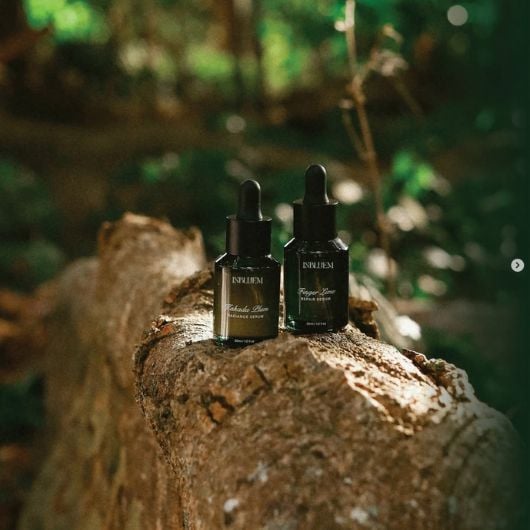Beauty Tipps, Zechsal
Der Funke des Lebens: Magnesium
Magnesium as the spark of life…
Magnesium plays a key role in vital bodily processes.
The origin of life will always capture the imagination. For some, it’s a mystical enigma, perhaps metaphysically rooted. For others, it’s primarily a chemical question. American Nobel laureate Jack Szostak belongs to the latter group. He has demonstrated that the presence of sufficient magnesium ions is a basic requirement for the formation of the first cell structures.
Der Glaube, dass die ersten Lebensformen vor etwa vier Milliarden Jahren im Meer entstanden sind, wird sogar von vielen Kreationisten akzeptiert. Dies steht nicht unbedingt im Widerspruch zu der (göttlichen) Hand, die das Leben in Gang gesetzt hat. Obwohl im Laufe der Geschichte dort, wo einst Meer war, Land- und Süßwasserflächen entstanden sind und sich Leben entwickelt hat, sind drei Fünftel der Erdoberfläche immer noch von Salzwasser bedeckt. Die genaue Zusammensetzung hat seit der Entstehung der Erde zweifellos geschwankt, aber wir können davon ausgehen, dass sich die Grundbestandteile nicht verändert haben. Wenn man ein Kilo (knapp einen Liter) Meerwasser einkocht, bleiben 34 Gramm Salz übrig. Dieses Salz ist unterteilt in etwa 30 Gramm Natriumchlorid, allgemein bekannt als Kochsalz, und 3% Magnesiumchlorid. Das verbleibende Gramm ist eine Mischung aus Kalzium- und Eisensalzen, Karbonaten, Bromiden, Sulfaten, einigen Resten von organischem Material und Verunreinigungen durch Mensch und Umwelt. Im Gegensatz zu dem etwas despektierlichen Begriff „Mix“ folgt der Verdunstungsprozess von Meerwasser einem strengen Protokoll. Magnesiumchlorid wird als letztes ausgefällt.
The Dead Sea
A particularly fascinating body of water is the Dead Sea, a saltwater lake between Jordan and Israel, which is slowly drying up. Less rainwater flows into it than evaporates out. As a result, the salt content – and thus the magnesium content – is about nine times as high as in the ocean. This extremely high salt content has given the Dead Sea a number of properties that caused health tourism even in ancient times. It has long been known that bathing in the Dead Sea, combined with the filtered UV radiation, has a beneficial effect. Particularly people with various types of skin complaints, but also those formerly referred to as ’nervous sufferers‘, benefit from a treatment visit to the Dead Sea. The high content of magnesium chloride in the Dead Sea water, not only makes you float, but also plays a key role in its effect.
Few people know that you can also benefit from the effects of magnesium chloride much closer to home, for example, in your own bathroom. Zechsal’s magnesium products contain highly concentrated natural magnesium chloride that allows you to enjoy the same relaxing and restorative effects from the comfort of your home, without exposure to pollution or heavy metals often found in open water sources.
Natürliche Magnesiumquellen
Zechsal verwendet natürliches Magnesiumchlorid, das aus unterirdischen Mineralschichten in den Niederlanden gewonnen wird. Diese mineralstoffreiche Quelle hat sich über Millionen von Jahren tief unter der Erdoberfläche gebildet und eine reine, konzentrierte Form von Magnesiumchlorid geschaffen. Der Rohstoff wird mit Sorgfalt und Qualitätskontrolle verarbeitet, um sicherzustellen, dass er für die topische Anwendung geeignet ist. Jede Produktionscharge wird überwacht, um hohe Reinheitsstandards aufrechtzuerhalten. Neben Magnesiumchlorid und Wasser enthält der Rohstoff auch Spuren von Mineralien wie Eisen, Mangan und Bor, die alle auf natürliche Weise das Gleichgewicht und die Entspannung des Körpers unterstützen. Das Ergebnis ist reines, natürliches Magnesium in seiner bioverfügbarsten Form.
Magnesium Robbers
The single-celled life that originated in the ocean did not lack magnesium. There was no need to develop a capacity to buffer it, as it was always present. But as life evolved and land creatures emerged, this constant replenishment was no longer a given. Fortunately, magnesium is also found in land food. Nuts, seeds, green vegetables, and bitter chocolate, for example, contain substantial amounts of magnesium. With a bit of common sense, it should not be difficult to gather the daily recommended amount (RDA). However, the generally accepted rule of thumb for this RDA, 6 mg per kilo of body weight, is controversial; the belief that it should be increased to 9 mg per kilo is gaining ground. Anyway: despite the conscious shopping list and the abundance of food, even the minimum RDA is rarely achieved nowadays. And when it is, there are several factors that hinder the effective use of magnesium in our bodies, requiring us to need even more.
The increasingly epidemic shortage of magnesium in modern humans (and many domesticated animals) has several causes. First, there’s our tendency to eat too fat, too salty (sodium), and too animal-heavy. At the same time, our food contains less and less magnesium. Since the start of intensive agriculture, the mineral content in our soil has drastically decreased. On the alarming charts that are published about this, the decrease in magnesium takes a prominent place. In addition, the average consumer also has to deal with the refining techniques of the food industry, which cause vital nutrients, including magnesium, to be lost.
If we still manage to get our portion of magnesium, the body must overcome a number of problems to use it effectively. Magnesium is absorbed slowly and in small amounts by the intestines. It is assumed that only a third of the magnesium provided by food is absorbed. The gastrointestinal tract doesn’t know what to do with large doses via supplementation. Much of it is therefore immediately expelled. Hence the common side effect of oral supplementation, diarrhea.
Having overcome that, there are still a number of robbers lurking: nicotine, alcohol, and medication like magnesium. For example, it was recently shown that among the 2 million Dutch people who take antacids, there might be problems with magnesium supply to tissues. Pregnant women, athletes, and women in menopause also need more magnesium. Another recognized thief is stress. More stress leads to a greater magnesium need, which in turn leads to more stress. Pollution, smog, and electrosmog are also mentioned as magnesium takers, but the main thief for many people is a mineral we also desperately need: calcium.
They actually form a necessary pair: magnesium and calcium. Calcium enables us to exert ourselves, such as contracting a muscle. Magnesium, on the other hand, facilitates relaxation. One cannot function without the other. The ideal ratio between these two antagonists is around 1 to 1. However, there is a growing imbalance in our time. The American food authority, the FDA, found an average ratio among Americans of 6 to 1. The problem is that this excess of calcium hinders the effective functioning of magnesium, so we actually need to take more magnesium to work back to that balance. This is only partially solved by eating very differently; many magnesium-rich foods also contain a lot of calcium.




























 Beauty Products
Beauty Products Marke A-Z
Marke A-Z Welness
Welness Gesundheid / Nutrition
Gesundheid / Nutrition